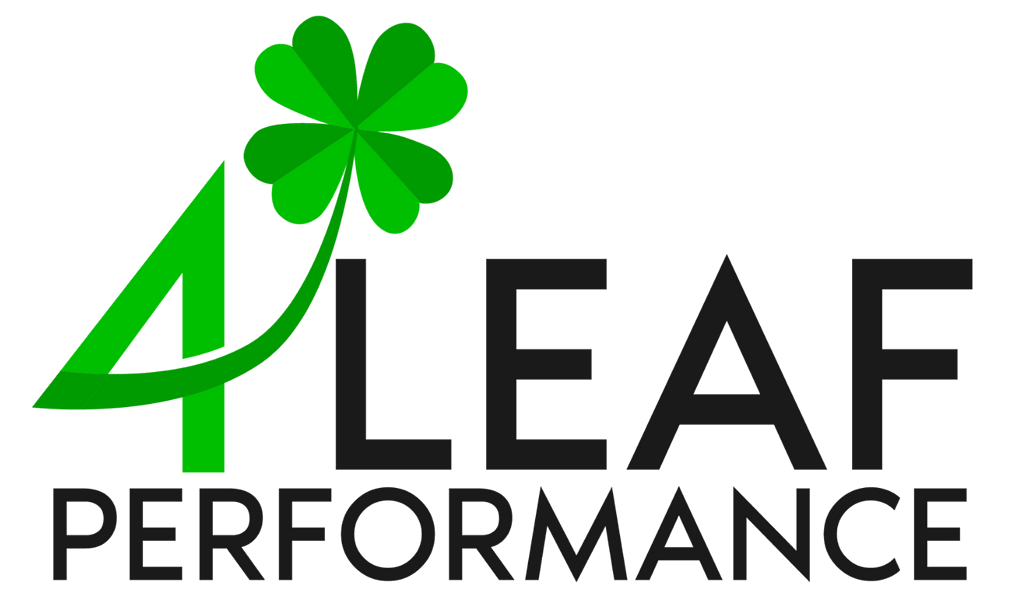One of the most effective ways to reach customers and drive business growth is through an email marketing campaign. Did you know that for every $1 spent on an email marketing campaign, businesses see an average return of $42? This impressive ROI highlights the importance of crafting a strategic email marketing campaign that truly resonates with your audience.
This blog will explore the essential elements of a successful email marketing campaign. Whether you want to enhance your email advertising efforts or refine your email promotion strategy, these tips will help you achieve your objectives.
Set Clear Goals for Your Email Marketing Campaign
Setting clear goals is the foundation of any successful email marketing campaign. With defined objectives, it’s easier to measure success or make improvements. Here are some steps to help you set and achieve your email marketing goals.
Define Objectives
First, identify what you want to achieve with your email marketing campaign. Are you looking to increase sales, boost engagement, or generate leads? Clear objectives help you focus your efforts and track your progress. For instance, if your goal is to increase sales, you might aim to drive more traffic to your product pages through targeted email advertising.
Examples of Goals
Here are some examples of practical goals for your email campaign:
- Increase Sales: Aim to boost revenue by promoting special offers and discounts through email promotions.
- Boost Engagement: Enhance interaction by encouraging recipients to participate in surveys, polls, or share feedback.
- Generate Leads: Capture more leads by offering valuable content such as eBooks or webinars in exchange for email sign-ups.
- Improve Open Rates: Improve your subject lines and email content to increase the percentage of opened emails.
- Enhance Click-Through Rates: Focus on crafting compelling CTAs to encourage more recipients to click through to your website or landing pages.
Understand Your Audience
Importance of Audience Research
Start by conducting thorough audience research. Understanding who your subscribers are, what they need, and how they behave allows you to create more relevant and effective email campaigns. This research analyzes previous campaigns’ demographic data, purchasing behavior, and engagement metrics. The insights you gain will help you segment your audience more effectively and personalize your content.
Creating Buyer Personas for Your Email Marketing Campaign
Creating detailed buyer personas is a powerful way to understand your audience better. A buyer persona is a semi-fictional representation of your ideal customer based on actual data and research. Here’s how to create them:
- Gather Data: Collect information from various sources, such as customer surveys, website analytics, and social media insights. Look for common traits among your best customers.
- Identify Key Characteristics: Focus on demographics (age, gender, location), psychographics (interests, values), and behavior patterns (buying habits, online activity).
- Develop Personas: Combine this data to create comprehensive profiles of your target customers. To make each persona more relatable, give it a name and a backstory.
For example, a buyer persona for your email campaign might be “Marketing Mary,” a 35-year-old marketing manager who values efficiency and is always looking for tools to streamline her work processes.
By understanding your audience and creating buyer personas, you can craft email promotions that resonate with specific segments of your audience. This tailored approach improves engagement and enhances the effectiveness of your overall email marketing campaign.
Utilize Email Templates
Using email templates can significantly enhance the efficiency and effectiveness of your email marketing campaign. They provide a consistent and professional look for your emails, making engaging your audience and promoting your message more accessible.
Importance of Using Templates
Email templates streamline the process of creating and sending emails. They ensure your emails are visually appealing and consistent with your brand identity. This consistency is crucial for building trust and recognition among your subscribers. Templates also save time, allowing you to focus more on crafting compelling content rather than worrying about design details.
Types of Email Templates
There are various types of email templates that you can use depending on the purpose of your email campaign. Here are some common ones:
- Marketing Emails: These templates are designed to promote products or services, highlight special offers, and drive sales. They typically include eye-catching visuals and strong calls to action.
- Newsletters: Use these templates to share updates, news, and valuable content with your subscribers. Newsletters help keep your audience engaged and informed.
- Transactional Emails: Set up emails that trigger when customers take specific actions, such as purchase confirmations, shipping notifications, and password resets. They should be clear, concise, and focused on the transaction details.
- Event Invitations: If you’re hosting a webinar, conference, or event, use invitation templates to provide all the necessary details and encourage sign-ups.
- Holiday and Seasonal Emails: These templates are perfect for sending holiday greetings, special promotions, and seasonal offers. They often incorporate festive designs to match the occasion.
Customer Retention Strategies
Retaining customers is just as important as acquiring new ones, if not more so. A well-executed email marketing campaign can keep your existing customers engaged and loyal. Here are some effective strategies to enhance customer retention through email marketing.
Techniques for Retention
- Send Personalized Offers: Tailor your email promotions to individual customers based on their purchase history and preferences. Personalized offers show that you value your customers and understand their needs, which can increase loyalty and repeat purchases.
- Exclusive Content and Rewards: Offer your loyal customers exclusive content, early access to new products, or special rewards. These offers can be a VIP program, where members receive benefits unavailable to regular subscribers. These perks make your customers feel valued and appreciated.
- Regular Engagement: Consistently engage with your customers through newsletters, updates, and follow-up emails. Tell them about new products, upcoming events, and other relevant news. Regular engagement helps maintain a strong connection with your audience and keeps your brand top-of-mind.
- Feedback Requests: Ask for feedback on their recent purchases or overall experience with your brand. Communicating with your customers like this shows that you care about their opinions and provides valuable insights that can help you improve your products and services. Additionally, promptly addressing any issues or concerns can enhance customer satisfaction and loyalty.
- Re-Engagement Campaigns: Identify inactive subscribers and create targeted re-engagement campaigns to win them back. Send them special offers, personalized messages, or a simple “we miss you” email.
Examples of Retention Emails
- Thank You Emails: Send a ‘thank you’ email after purchase to show appreciation and encourage future purchases. Include recommendations for related products or services to enhance the customer’s experience.
- Anniversary Emails: Offer a special offer or discount to celebrate the anniversary of your customer’s first purchase or sign-up. This personal touch can strengthen the customer relationship and encourage repeat business.
- Exclusive Previews: Give your loyal customers ‘early access’ to new products or services. This will make them feel special and valued, increasing their loyalty and likelihood of future purchases.
- Product Updates: Inform customers about updates or improvements to purchased products to keep them engaged and show that you continuously work to provide better value.

Create Valuable Content
Creating valuable content is the cornerstone of any successful email marketing campaign. The content you send your subscribers must be engaging, relevant, and worthwhile to keep them interested and responsive. They should also help your audience gain an insight into your ‘why’ so that they can truly resonate with your message.
Types of Engaging Content
- Educational Content: Share tips, how-to guides, and industry insights to position your brand as an authority in your field and build confidence with your subscribers. For example, if you’re in the fitness industry, you might share workout routines, nutritional advice, or wellness tips.
- Promotional Content: Use email advertising to inform your audience about special offers, discounts, and promotions. Ensure these emails are straightforward and include a solid call to action to drive sales. For instance, a limited-time offer or a seasonal sale can create a sense of urgency and boost conversions.
- Storytelling: Share stories about your brand, customer success stories, or behind-the-scenes looks at your business. Storytelling helps humanize your brand and makes your emails more relatable and engaging. Highlighting a customer’s journey and how your product helped them can be particularly effective.
- Product Updates: Inform your customers about new product launches, updates, or improvements. This will not only keep your audience engaged but also encourage repeat purchases from existing customers who are interested in your latest offerings.
- Exclusive Content: Give subscribers access to exclusive content such as early announcements, sneak peeks, or special events to make them feel valued and part of an exclusive group. Doing this can increase loyalty and engagement.
Balancing Content
Balancing promotional content with informative and engaging content is essential to maintain a successful email campaign. Here are some tips for achieving the right balance:
- Follow the 80/20 Rule: Aim to send 80% valuable, informative content and 20% promotional content to ensure that your subscribers stay engaged without feeling overwhelmed by constant sales pitches.
- Segment Your Audience: Tailor your content based on the interests and behaviors of different segments of your audience. This will allow you to send more relevant content to each group, increasing engagement and effectiveness.
- Consistent Schedule: Maintain a regular sending schedule to keep your audience expecting and looking forward to your emails. Consistency helps build trust and keeps your brand top-of-mind.
- Use Strong CTAs: Even in non-promotional emails, include a call to action that encourages engagement. You can add links to read more on your blog, follow you on social media, or participate in a survey.
Personalization and Segmentation
By tailoring your messages to specific groups within your audience, you can increase engagement and drive better results.
Advanced Segmentation Techniques
Segmentation involves dividing your email list into smaller, more targeted groups based on specific criteria so you can send more relevant content to each segment. Here are some advanced segmentation techniques to consider:
- Demographic Segmentation: Divide your list based on demographic factors such as age, gender, location, and income level. For example, if you run an online clothing store, you can send different promotions to male and female subscribers.
- Behavioral Segmentation: Segment your audience based on their behavior, such as past purchases, browsing history, and email engagement, to target customers more likely to respond to specific email promotions. For instance, send a special offer to subscribers who have abandoned their shopping carts.
- Psychographic Segmentation: Group your subscribers based on their interests, values, and lifestyles. This strategy can be particularly effective for niche markets. For example, if you sell eco-friendly products, you can segment your audience based on their interest in sustainability.
- Purchase History Segmentation: Target your customers based on their purchase history. To encourage loyalty, send personalized recommendations or exclusive offers to repeat buyers.
- Engagement Level Segmentation: Segment your list by engagement levels, such as active, inactive, or new subscribers, to tailor your messages to re-engage inactive subscribers or welcome new ones.
Effective Personalization
Personalization goes beyond using the recipient’s name in the email. It involves tailoring the content to match each segment’s specific needs and interests. Here’s how to do it effectively:
- Dynamic Content: Use dynamic content to show different images, offers, or messages to various segments within the same email. For example, display different products based on the recipient’s past purchases.
- Personalized Subject Lines: Create subject lines that are relevant to each segment. Personalized subject lines can significantly increase open rates. For instance, “John, check out our new arrivals just for you” is more engaging than a generic subject line.
- Tailored Recommendations: Use data from past interactions to make personalized product recommendations and enhance the customer experience, driving more sales. For example, if a customer recently bought a smartphone, suggest compatible accessories.
- Triggered Emails: Set up automated emails triggered by specific actions, such as signing up for a newsletter, making a purchase, or abandoning a cart. These timely emails are more likely to be relevant and effective.
- Custom Offers: Send exclusive offers and discounts based on the recipient’s behavior and preferences. For instance, offer a discount on a customer’s birthday or anniversary of their first purchase.
Interactive Content
Benefits of Interactive Emails
Interactive content transforms a passive reading experience into an active engagement. Here are some key benefits:
- Increased Engagement: Interactive elements like quizzes, surveys, and polls encourage subscribers to interact with your email, increasing engagement rates.
- Enhanced User Experience: Interactive emails provide a more engaging and enjoyable experience for your subscribers, making them more likely to engage with your future emails.
- Valuable Insights: Collecting data through interactive content can provide helpful insights into your audience’s preferences and behaviors, allowing you to tailor your email advertising efforts more effectively.
Examples of Interactive Elements
Here are some interactive elements you can incorporate into your email campaigns:
- Quizzes and Surveys: Quizzes and surveys are excellent for engaging your audience and gathering valuable feedback. For example, a fashion retailer could create a quiz to help subscribers find their personal style while gathering insights into customer preferences.
- Polls: Polls are a quick and easy way to get opinions from your subscribers. You can use them to gather feedback on new product ideas, content preferences, or any other topic relevant to your audience.
- Image Carousels: Carousels allow you to showcase multiple products or features in a single email without overwhelming the reader. This can be particularly effective for product launches or seasonal promotions.
- Clickable Tabs: Clickable tabs enable you to organize content into sections readers can click through without leaving the email. These tabs are helpful for newsletters or informational emails that cover multiple topics.
- Animated GIFs: GIFs can add a fun and dynamic element to your emails. Use them to highlight special offers, illustrate how a product works, or add personality to your email promotions.
- Interactive Infographics: Infographics can be interactive by adding clickable elements that reveal more information. This makes the content more engaging and allows subscribers to explore the information at their own pace.
How to Implement Interactive Content
- Keep It Simple: Ensure your interactive elements are easy to use and do not overwhelm the reader. Simplicity is key to maintaining a positive user experience.
- Test Your Elements: Before sending your email, test all interactive elements to ensure they work correctly on different devices and email clients. This helps avoid any technical issues that could hinder engagement.
- Align with Goals: Ensure that your interactive content supports the overall goals of your email marketing campaign. Whether they’re increasing engagement, gathering feedback, or driving sales, your interactive elements should support these objectives.
- Use Clear Calls to Action: Guide your subscribers to what to do next with clear and compelling calls to action. Whether they take a quiz, answer a poll, or click through an image carousel, make sure the next step is obvious.
A/B Testing
A/B testing, also known as split testing, compares two versions of an email to determine which one performs better. This technique helps you understand what resonates best with your audience, ultimately improving the effectiveness of your email marketing campaign.
Steps for A/B Testing
To effectively use A/B testing in your email advertising efforts, follow these steps:
- Choose a Variable to Test: Select one element of your email to test at a time. Common variables include subject lines, call-to-action (CTA) buttons, images, and email layout. Testing one variable at a time ensures you can identify which change impacts performance.
- Create Two Versions: Develop two versions of your email, each differing only by the chosen variable. For example, if you are testing subject lines, keep the email content identical but use two different subject lines.
- Divide Your Audience: Divide your email list into equal and random segments. Send one version of the email to the first segment and the other to the second segment to ensure that each version’s testing environments are similar.
- Send the Emails: Dispatch both versions simultaneously to ensure that timing does not affect the results. Consistency in timing helps you obtain accurate and comparable data.
- Measure the Results: Analyze metrics such as open rates, click-through rates, and conversion rates to determine which version performed better. These metrics will provide insights into how your audience responds to different elements of your email.
Key Elements to Test
When conducting A/B testing, consider experimenting with the following elements to optimize your email campaign:
- Subject Lines: Test different subject lines to determine which generates higher open rates. Experiment with length, tone, personalization, and the inclusion of emojis to find what works best for your audience.
- Call to Action (CTA): Test different CTAs to determine which drives more clicks. Variations can include the wording, color, size, or placement of the CTA button. For instance, “Shop Now” versus “Learn More” might yield different results.
- Email Design: Experiment with different layouts, colors, and fonts to see which design elements enhance engagement. You can also test whether a text-heavy email or one with more images performs better.
- Content: Test different types of content to see what resonates most with your audience. Compare long-form content to short snippets or experiment with varying messaging styles, such as storytelling versus straightforward information.
- Send Time and Frequency: Test different sending times and days of the week to identify when your audience will most likely engage with your emails. Additionally, experimenting with the frequency of your emails can help you find the optimal sending schedule that maximizes engagement without overwhelming your subscribers.
By systematically conducting A/B tests and analyzing the results, you can continuously refine and improve your email marketing campaign. This approach ensures that your email promotions are based on data-driven insights, leading to more effective and engaging email advertising efforts.

Data Management and Analytics
Effective data management and analytics are essential for optimizing your email marketing campaign. Tracking performance is critical to understanding the effectiveness of your email campaigns. By monitoring key metrics, you can identify what works and what doesn’t, allowing you to refine your strategy. Consistent tracking helps ensure your email marketing campaign aligns with your business goals and delivers the desired results.
Tools and Metrics
To effectively manage and analyze your email campaign data, use the right tools and focus on key metrics:
- Email Marketing Platforms: Use robust email marketing platforms like Mailchimp, HubSpot, or Mailmunch. These tools offer built-in analytics that provides insights into your email performance, helping you easily track and measure key metrics.
- Open Rate: This metric shows the percentage of recipients who opened your email. A high open rate indicates that your subject line and preview text are compelling. Aim for an open rate of 20-30%.
- Click-Through Rate (CTR): CTR measures the percentage of recipients who clicked on a link within your email. A high CTR indicates that your content and CTAs are engaging and relevant. Aim for a 2-5% CTR to ensure your email promotions are effective.
- Conversion Rate: This metric tracks the percentage of recipients who completed a desired action, such as making a purchase or signing up for a webinar. A high conversion rate indicates that your email content and offers are persuasive.
- Bounce Rate: Bounce rate measures the percentage of emails that were not delivered. A high bounce rate can harm your sender reputation and affect future deliverability. Regularly clean your email list to maintain a low bounce rate, ideally below 2%.
- Unsubscribe Rate: This metric shows the percentage of recipients who unsubscribed from your list after receiving an email. Monitoring this rate helps you understand how your content resonates with your audience. Aim for an unsubscribe rate below 0.5%.
- Engagement Over Time: Analyze how engagement metrics like open rate, CTR, and conversion rate change over time to help you identify trends and adjust your strategy accordingly.
Using Insights to Improve
Once you’ve gathered and analyzed your data, use these insights to improve your email marketing campaigns:
- Refine Your Content: Use data to understand which types of content resonate most with your audience. Focus on creating more of what works and less of what doesn’t.
- Optimize Send Times: Analyze when your emails will most likely be opened and adjust your send times accordingly. Testing different times and days can help you find the optimal schedule for your audience.
- Segment Your Audience: Use data to refine your audience segments. By understanding the behaviors and preferences of different segments, you can create more targeted and effective email promotions.
- Test and Iterate: Continuously test different elements of your emails, such as subject lines, CTAs, and content, to see what drives the best results. Use A/B testing to validate your hypotheses and iterate based on the findings.
Optimizing Your Email Marketing Campaign for Mobile
With more people checking their emails on mobile devices, optimizing your email marketing campaign for mobile is crucial. A mobile-friendly design ensures your emails look great and function well on any device, improving engagement and conversion rates.
Ensuring Mobile-Friendliness
To ensure your emails are mobile-friendly, follow these essential steps:
- Use Responsive Design: Responsive design adjusts your email’s layout based on the screen size. Your emails will look good whether viewed on a smartphone, tablet, or desktop. Many email marketing platforms offer responsive templates to make this easier.
- Simplify Your Layout: Keep your email layout simple and clean. Avoid complex designs that might not translate well to smaller screens. A single-column layout works best for mobile devices, ensuring your content is easily read and navigated.
- Optimize Images: Make sure your images are mobile-optimized. Use high-quality images that load quickly and look good on smaller screens. Also, include alt text for images in case they don’t load properly.
Mobile Optimization Best Practices
- Short Subject Lines: Mobile screens display fewer characters, so keep your subject lines short and to the point. Aim for 30-40 characters to ensure your subject line is fully visible and compelling.
- Large, Tap-Friendly Buttons: Make your call-to-action (CTA) buttons large enough to be easily tapped on a mobile screen. Use a contrasting color to make them stand out and ensure enough white space around the button.
- Readable Fonts: Use a legible font size for mobile devices. Typically, 14-16px for body text and 20-22px for headlines work well. Avoid tiny fonts that require zooming in to read.
- Concise Content: Mobile users prefer concise, scannable content. Keep your email copy brief and to the point. Use bullet points, short paragraphs, and clear headings to make your content easy to digest.
- Preheader Text: Utilize the preheader text to provide additional context to your subject line. This can increase open rates by giving recipients more information about the content of your email.
- Test on Multiple Devices: Before sending your email, test it on multiple devices and email clients to ensure it looks and functions as intended. Most email marketing platforms have built-in testing tools to help you preview your emails on different screens.
By optimizing your email marketing campaign for mobile, you can ensure a seamless and enjoyable experience for your subscribers, regardless of their device.
Compliance and Privacy
Compliance and privacy are crucial aspects of any email marketing campaign. Adhering to legal regulations and respecting your subscribers’ privacy helps you avoid potential penalties.
Understanding Laws and Regulations
You must know crucial email advertising regulations to ensure your email marketing campaign complies with the law. Here are some important ones:
- CAN-SPAM Act (United States): This law requires you to include a straightforward way for recipients to opt out of your emails, honor opt-out requests promptly, and include your physical mailing address in every email. It also prohibits misleading subject lines and email headers.
- GDPR (European Union): The General Data Protection Regulation requires you to obtain consent from EU subscribers before emailing them. It also grants individuals the right to access, correct, and delete their personal data. Non-compliance can result in hefty fines.
- CASL (Canada): The Canadian Anti-Spam Legislation requires you to obtain express or implied consent before sending commercial emails. It also mandates that you include an explicit opt-out mechanism and contact information in every email.
- Privacy and Electronic Communications Regulations (UK): These regulations require you to obtain consent before sending unsolicited marketing emails. They also give subscribers the right to opt out of marketing communications anytime.
Best Practices for Compliance
Follow these best practices to ensure your email campaign adheres to compliance and privacy standards:
- Obtain Consent: Always get explicit permission from your subscribers before adding them to your email list. Use double opt-in methods to confirm consent and keep records of said consent for future reference.
- Clear Unsubscribe Options: Make it easy for subscribers to opt out of your emails. Include a clear and visible unsubscribe link in every email and ensure that opt-out requests are processed promptly.
- Provide Contact Information: Include your business’s physical address and contact information in every email.
- Transparent Data Practices: Be transparent about how you collect, use, and store your subscribers’ data. Include a link to your privacy policy in your emails and ensure it’s easy to understand.
- Respect Privacy Preferences: Allow subscribers to manage their preferences regarding the types of emails they receive from you. This can reduce opt-out rates and improve engagement by sending more relevant content.
- Regularly Update Your List: Keep your email list clean and up-to-date. Remove inactive subscribers and those who have opted out to maintain a healthy list and improve your email marketing performance.
Avoiding Common Pitfalls
Even the best-planned email marketing campaign can encounter pitfalls that hinder its success. By being aware of these common mistakes, you can proactively avoid them and ensure your email advertising efforts are effective.
Common Mistakes to Avoid
- Ignoring Mobile Optimization: Failing to optimize for mobile can drastically reduce engagement, with many emails opened on mobile devices. Ensure your emails are mobile-friendly with responsive design, readable fonts, and easily tappable buttons.
- Overloading with Information: Bombarding your subscribers with too much information can overwhelm them and lead to higher unsubscribe rates. Keep your emails concise and focused on a single message or call to action. If you have multiple points to cover, consider sending multiple emails instead.
- Neglecting Personalization: Sending generic emails can lead to lower engagement rates. Personalize your emails based on your subscribers’ preferences, behaviors, and demographics. Use their names, recommend products based on past purchases, and tailor content to their interests.
- Inconsistent Sending Frequency: Sending emails too frequently can annoy your subscribers while sending them too infrequently can cause them to forget about your brand. Find a balance that keeps your audience engaged without overwhelming them. Consistency is vital to maintaining a solid relationship with your subscribers.
- Poor Subject Lines: The subject line is the first thing your subscribers see; a weak one can result in low open rates. Craft compelling subject lines that spark curiosity or provide value. Avoid using all caps or excessive punctuation, which can be spammy.
- Ignoring Metrics and Feedback: Failing to track your email campaign performance or ignoring subscriber feedback can prevent you from making necessary improvements. Regularly monitor open rates, click-through rates, and conversion rates. Use this data to refine your strategy and address any issues.
Troubleshooting and Correcting Your Email Marketing Campaign
- Mobile Optimization: Always preview your emails on various devices before sending them out. Use tools provided by your email marketing platform to ensure your emails look great on both desktop and mobile.
- Concise Content: Focus on a clear and compelling message. Use bullet points, short paragraphs, and headings to make your content easy to read and digest.
- Personalization: Segment your audience and use dynamic content to personalize your emails. Simple touches like addressing subscribers by their first name can make a big difference.
- Consistent Frequency: Develop a regular email schedule that your subscribers can expect. Use A/B testing to determine the optimal frequency for your audience.
- Effective Subject Lines: Experiment with different subject lines to see what resonates best with your audience. A/B testing can help you identify the most effective wording and format.
- Monitoring and Feedback: Use analytics tools to track the performance of your emails. Pay attention to metrics and be ready to adjust your strategy based on the data. Encourage and act on subscriber feedback to continually improve your email campaigns.

Your Path to Email Marketing Campaign Excellence
Mastering the art of a successful email marketing campaign involves setting clear goals, understanding your audience, utilizing effective email templates, and focusing on customer retention. Whether you want to increase sales, boost engagement, or build customer loyalty, a well-executed email campaign can make a significant difference.
Ready to take your email marketing to the next level? At 4 Leaf Performance, we specialize in business coaching services that can help you refine your email marketing strategy and achieve outstanding results. Contact us today to learn how we can support your business growth through expert coaching and tailored strategies.



